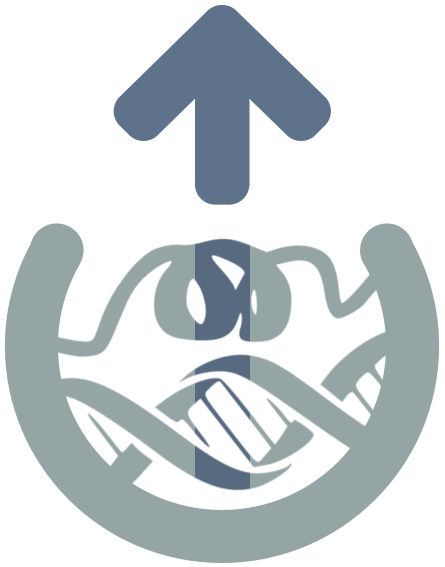MDWeb & MDMoby. A comprehensive set of tools to allow automated setup and analysis of molecular dynamics trajectories. Access is available through a Web portal, but also through a series of web-services developed in the Biomoby framework
Reference:
Adam Hospital, Pau Andrio, Carles Fenollosa, Damjan Cicin-Sain, Modesto Orozco, Josep Lluís Gelpí
MDWeb and MDMoby: an integrated web-based platform for molecular dynamics simulations.
Bioinformatics, 2012, 28(9):1278-1279.
Reference:
Pau Andrio, Adam Hospital, Javier Conejero, Luis Jordá, Marc Del Pino, Laia Codo, Stian Soiland-Reyes, Carole Goble, Daniele Lezzi, Rosa M. Badia, Modesto Orozco & Josep Ll. Gelpi
BioExcel Building Blocks, a software library for interoperable biomolecular simulation workflows.
Nature Scientific Data (2019), 6, Article number: 169.
The
BioBB REST API provides programmatic access to the list of >150 available tools integrated in the BioBB library without the need for any local installation. The
website contains extensive information about the endpoints, including documentation and tutorials.
Reference:
Genís Bayarri, Pau Andrio, Adam Hospital, Modesto Orozco & Josep Lluís Gelpí.
BioExcel Building Blocks REST API (BioBB REST API), programmatic access to interoperable biomolecular simulation tools.
Bioinformatics Application Note (minor revisions), 2022.
The
BioBB Workflows web server is a web-based graphical user interface (GUI) offering access to a collection of transversal pre-configured biomolecular simulation workflows assembled with the BioExcel Building Blocks library. Available workflows include Molecular Dynamics setup, protein-ligand docking, trajectory analyses and small molecule parameterization. Workflows can be launched in the platform or downloaded to be run in the users’ own premises. Remote launching of long executions to user’s available High-Performance computers is possible, only requiring configuration of the appropriate access credentials. The web-based graphical user interface offers a high level of interactivity, with integration with the NGL viewer to visualize and check 3D structures, MDsrv to visualize trajectories, and Plotly to explore 2D plots.
Reference:
Genís Bayarri, Pau Andrio, Adam Hospital, Modesto Orozco & Josep Lluís Gelpí
BioExcel Building Blocks Workflows (BioBB-Wfs), an integrated web-based platform for biomolecular simulations.
Nucleic Acids Research, Web Server Issue (just accepted), 2022.
3D Representation Sharing (3dRS) is a web-based tool designed to share biomolecular structure representations, including 4D ensembles derived from Molecular Dynamics (MD) trajectories. The server offers a team working in different locations a single URL to share and discuss structural data in an interactive fashion, with the possibility to use it as a live figure for scientific papers.
Reference:
Genís Bayarri, Adam Hospital and Modesto Orozco.
3dRS, a Web-Based Tool to Share Interactive Representations of 3D Biomolecular Structures and Molecular Dynamics Trajectories.
Front. Mol. Biosci., 13 August 2021, doi: 10.3389/fmolb.2021.726232.
Molywood is a robust and intuitive tool that builds on the capabilities of Visual Molecular Dynamics (VMD) to automate all stages of macromolecular structure and trajectories movie rendering. Based on Python scripts, it implements the basic concepts of actions, layers, grids and concurrency and requires no programming experience to run. Extensive documentation, including examples and tutorials, can be found in the
website.
Reference:
Miłosz Wieczór, Adam Hospital, Genís Bayarri, Jacek Czub and Modesto Orozco.
Molywood: streamlining the design and rendering of molecular movies.
Bioinformatics, Volume 36, Issue 17, 1 September 2020, Pages 4660–4661, https://doi.org/10.1093/bioinformatics/btaa584























